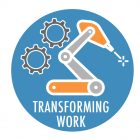
Michigan’s low-tax strategy has failed. Since 2000 Michigan has experienced––in good times and bad and no matter which party has been in control in Lansing––far worse than the nation employment and wage growth.
In 2000 Michigan accounted for 3.6 percent of the nation’s employment. In 2021 it had fallen to 2.9 percent. If Michigan’s employment were still 3.6 percent of the nation’s there would be 855,000 more Michiganders employed today.
The story is the same for average wages. Michigan falling from 3.5 percent above the nation in 2000 to 9.3 percent below in 2021. If Michigan’s average wage was still 3.5 percent above the nation’s, average wages here would be $184 higher each week than they are today. For full-time, year-round workers that is an additional $9,568 per year.
This despite Michigan ranking 12th in the Tax Foundation’s 2022 State Business Tax Climate Index.
Why has Michigan’s low-tax strategy failed? In a recent sponsored article Business Leaders for Michigan got it exactly right when they wrote:
Businesses go where the talent is based. Michigan is in a race with other states for talented people to fill jobs. The availability of highly skilled and educated workers will make the difference between states that excel and those that fall behind in the decades ahead.
We now live in an economy where talent attracts capital. Where talent––particularly those with a four-year degree or more–– is the asset that matters most to and is in the shortest supply for high-growth/high-wage employers. Quite simply, the places with the greatest concentrations of talent win.
You can see the importance of talent concentrations by looking at computer systems design and software publishing. These are very much talent-driven industries. And they are prototypical of the economy’s high-growth/high-wage, knowledge-based industries.
Since 2000 computer system design companies have added a little more than one million jobs with an average weekly wage of $2,983 more than double the national average. Since 2000 software publishing companies have added a little more than 300,000 jobs with an average weekly wage of $4,071 just shy of triple the national average.
In 2000 Michigan had 3.6 percent of the nation’s computer system design jobs. In 2021 it had fallen to 2.0 percent. Michigan added less than one thousand of the one million new jobs in the industry. In software publishing the story is the same: Michigan falling from an employment share of 3.0 percent to 1.3 percent. In an industry that added 300,000, Michigan suffered a decline of about 700 jobs .
Contrary to conventional wisdom, Michigan having far lower average weekly wages in both industries––$2,284 in computer system design and $2,612 in software publishing––did not give the state a competitive advantage.
It should not be a surprise that Michigan is noncompetitive in both of these industries. Talent concentration––not low taxes or low wages––is the asset that matters most to knowledge-based enterprises. This is the prime lesson that Michigan should have learned––but so far has not––from our failure to be competitive for Amazon HQ2. They told us quite clearly that Michigan does not have the talent concentrations required to be competitive at any scale for knowledge-based business investments.
For Michigan and its regions to be competitive with leading-edge/high-prosperity communities we need to completely redesign our economic development strategy and practice. That means moving away from the low-tax economic development playbook to one that makes preparing, retaining and attracting talent economic development priority #1. Staying the course means accepting being a low-prosperity state structurally.







